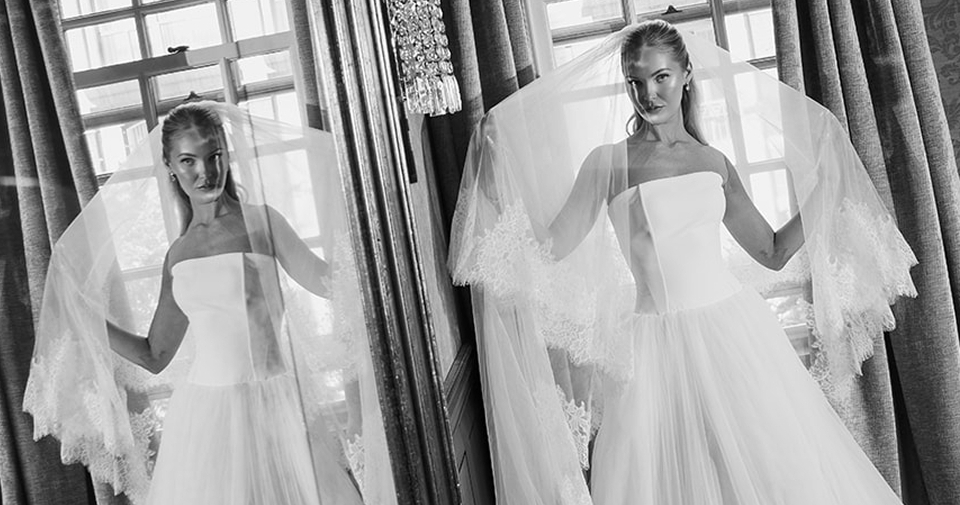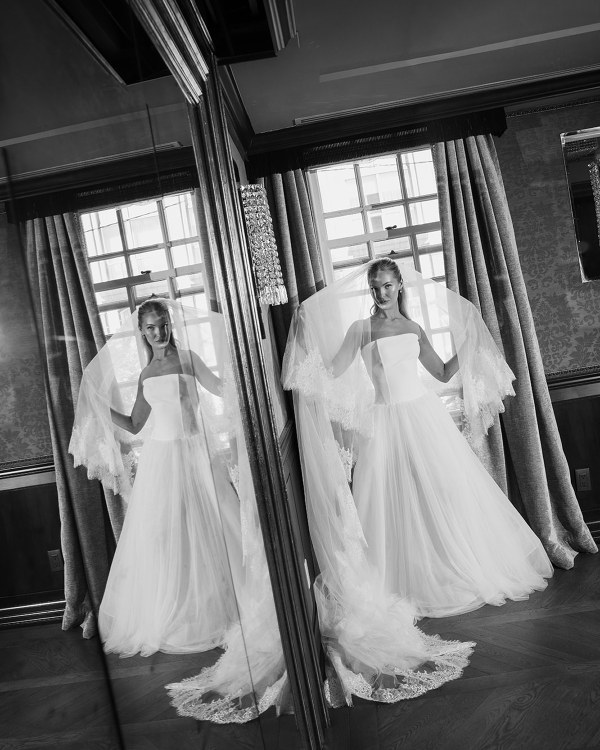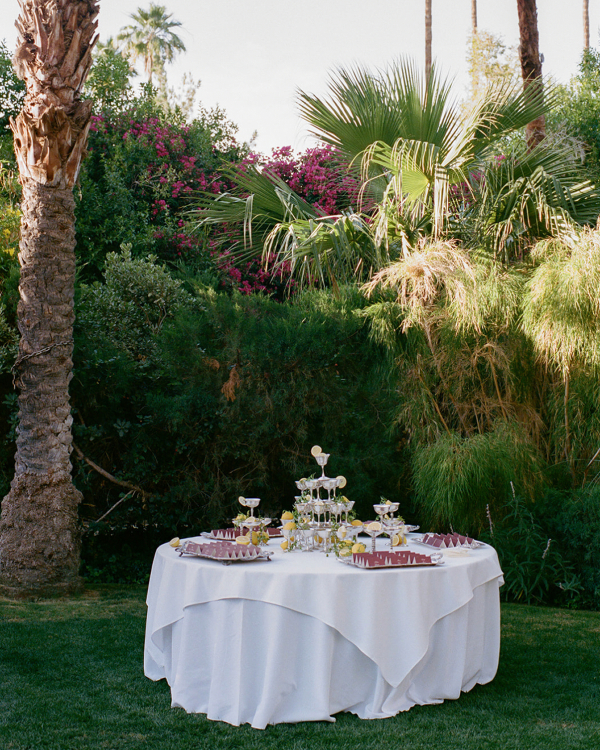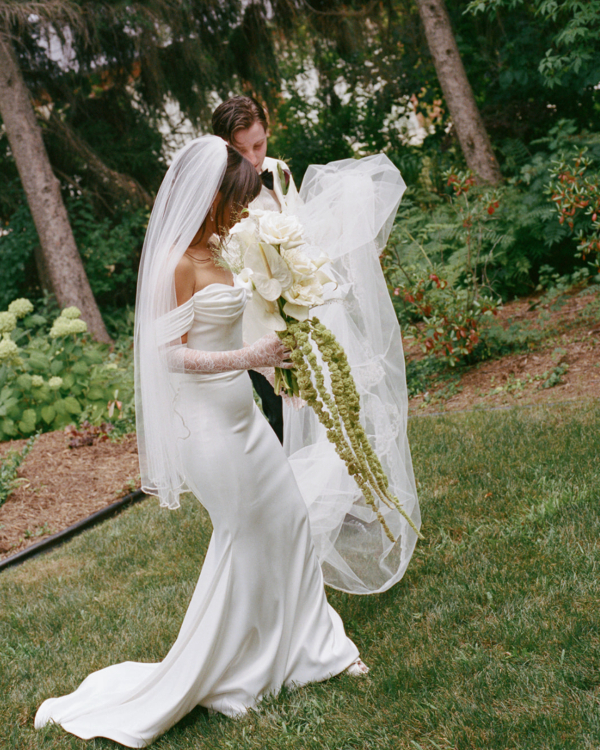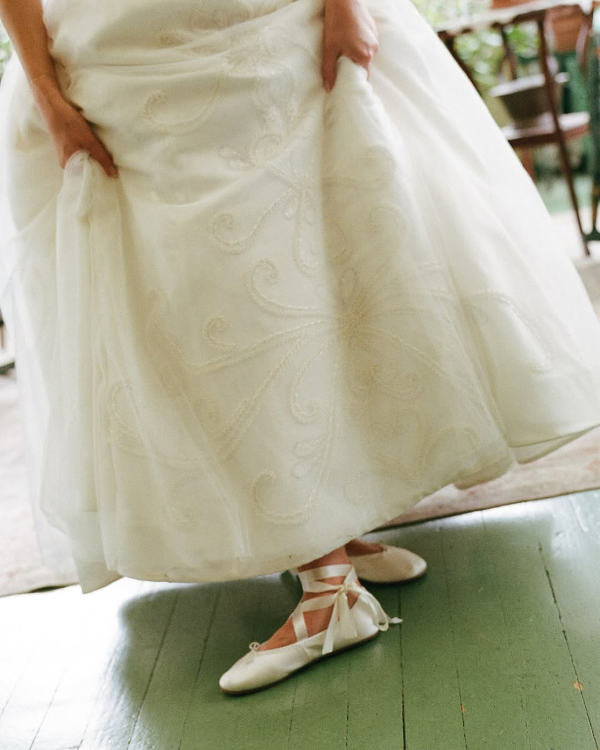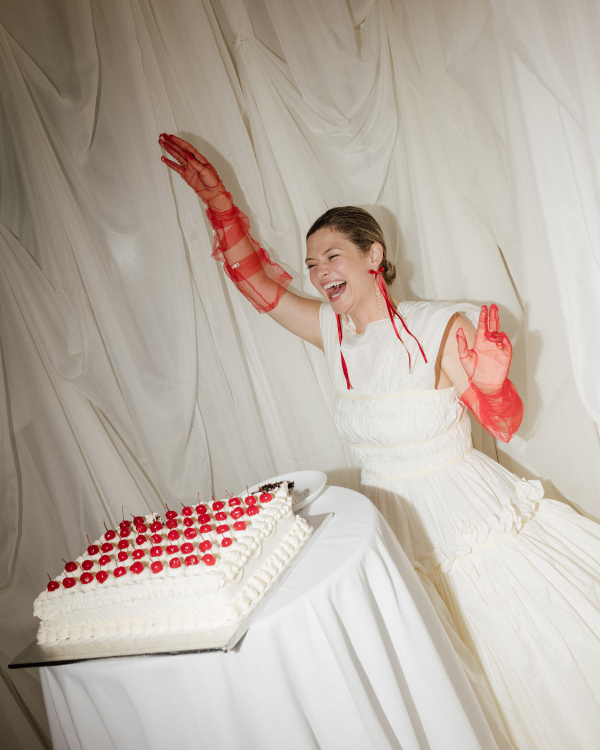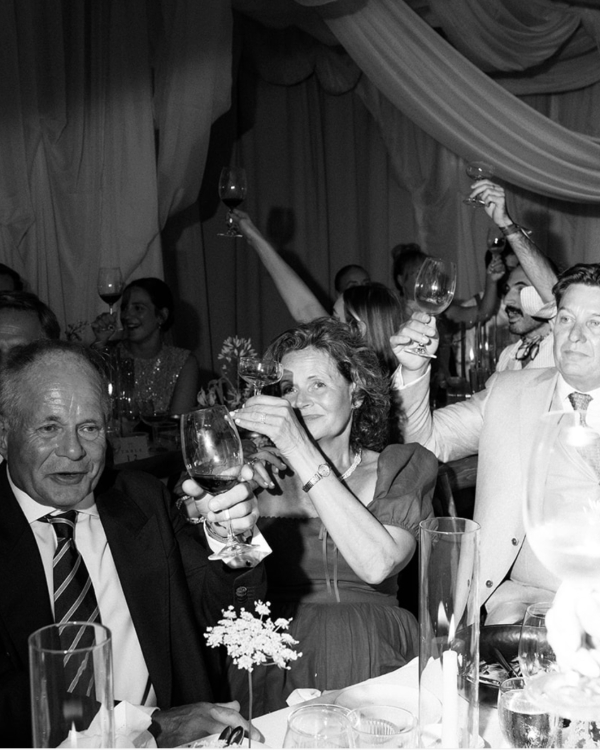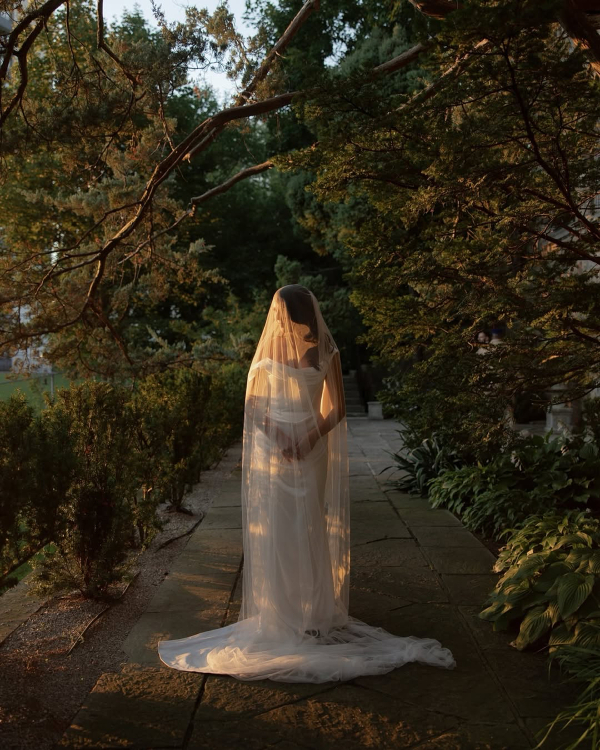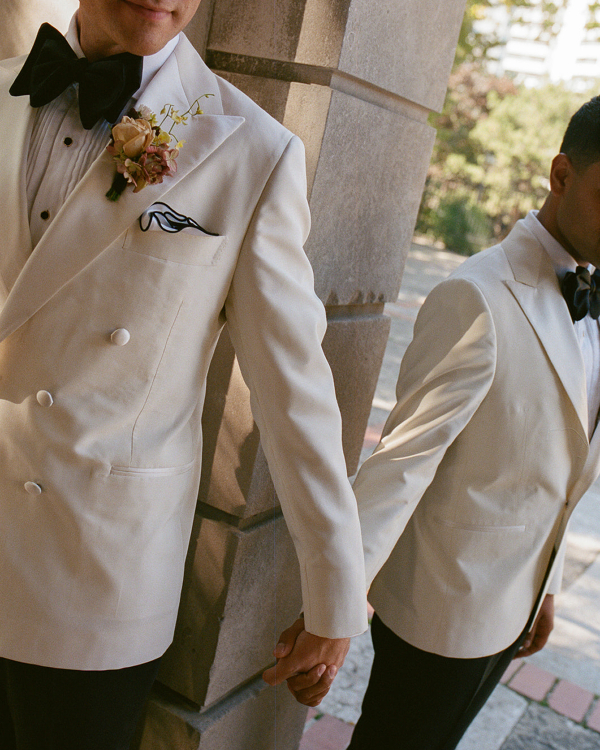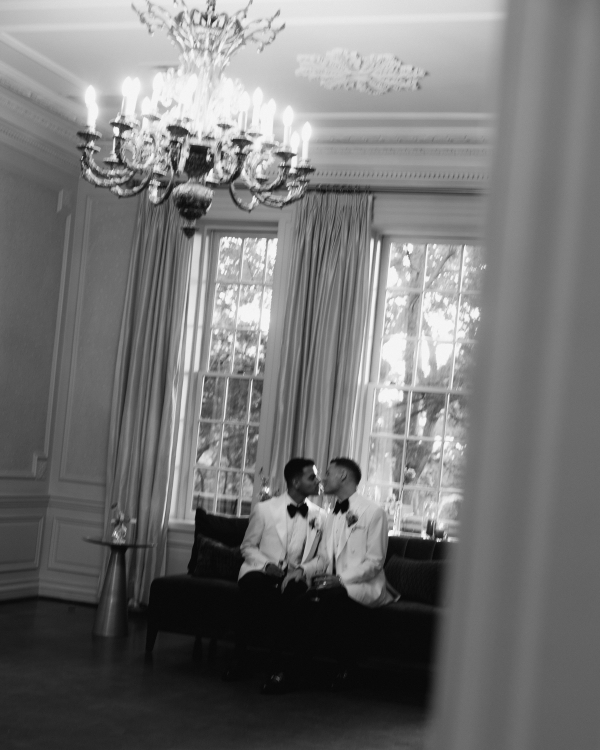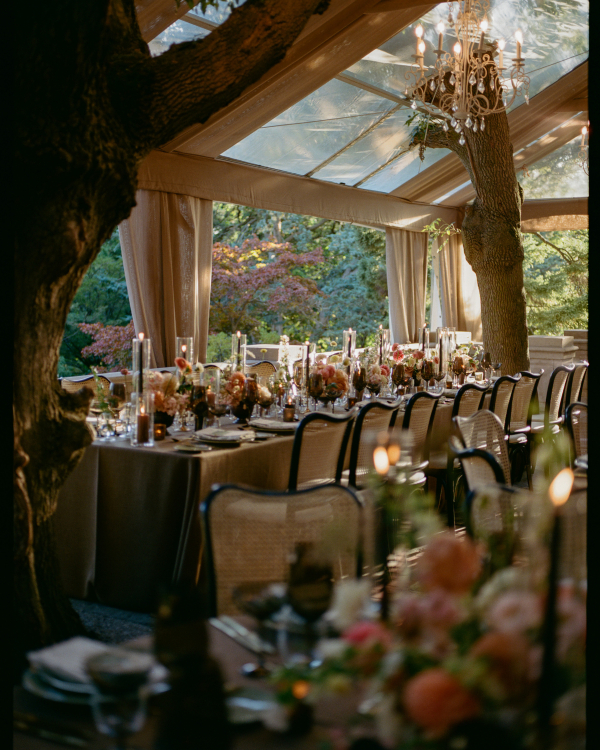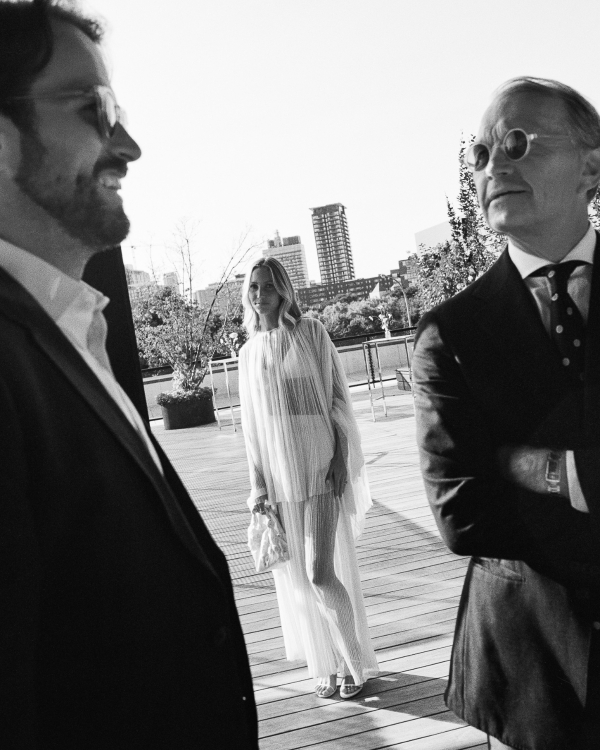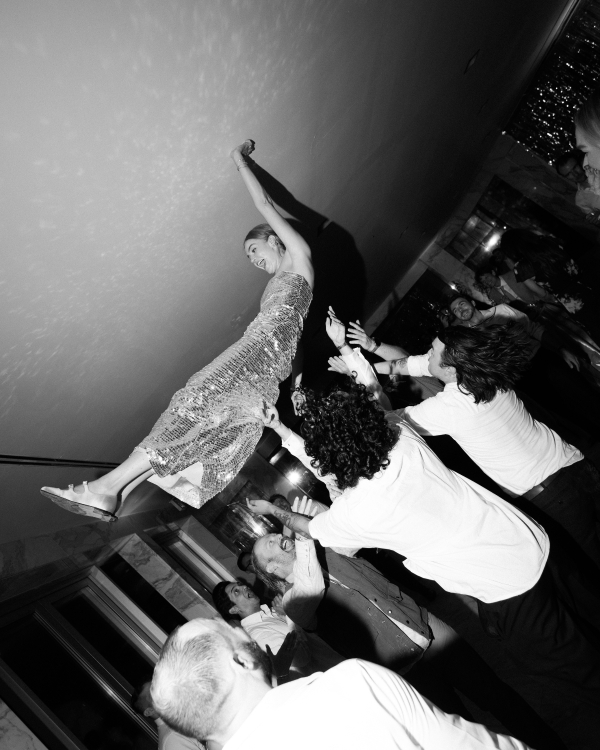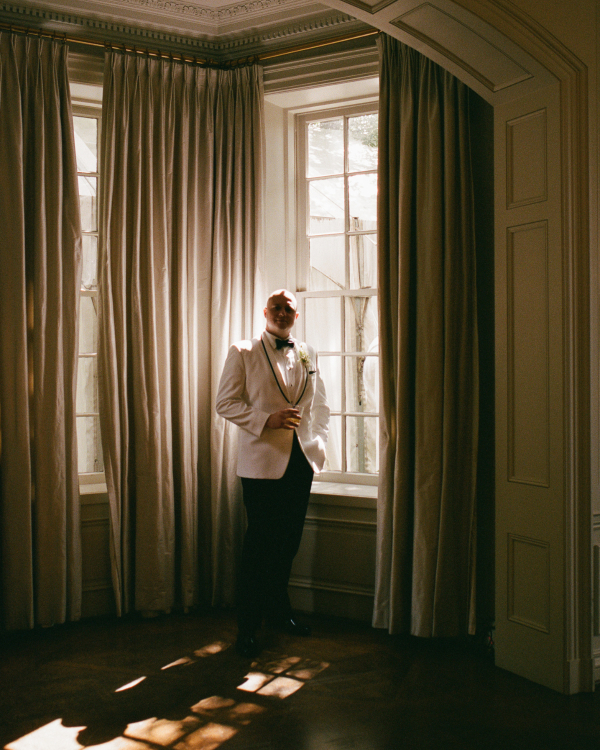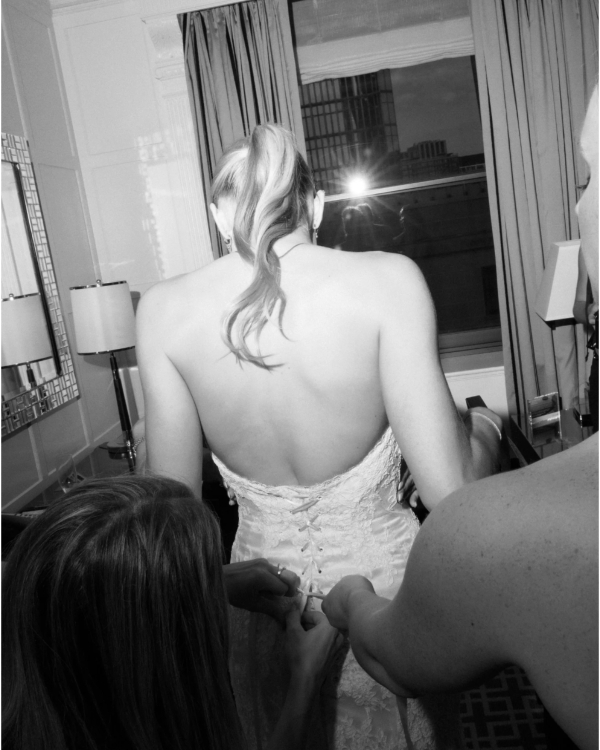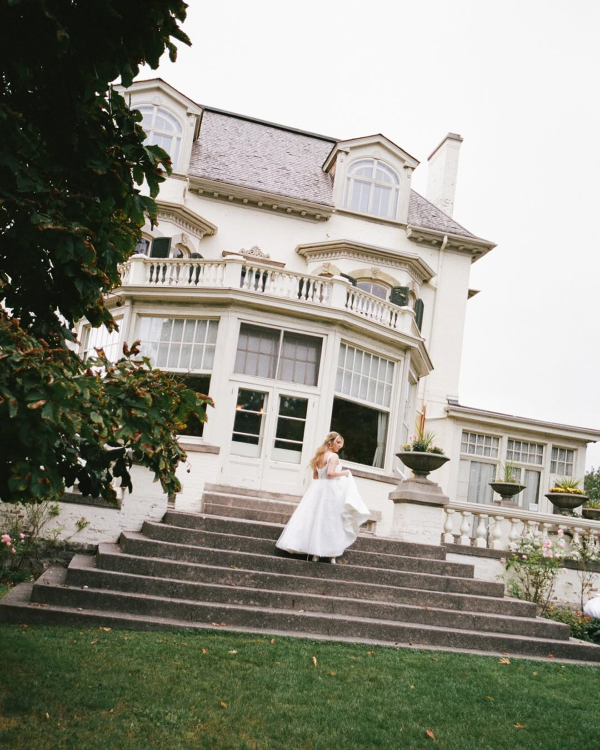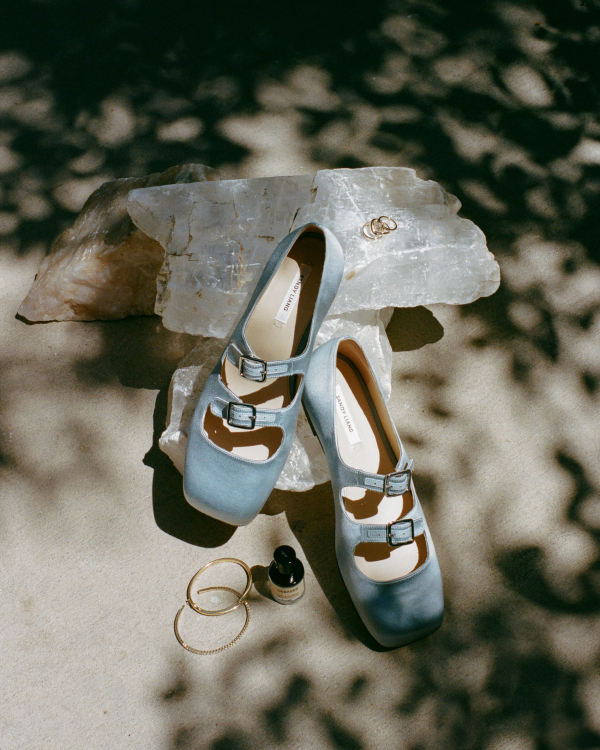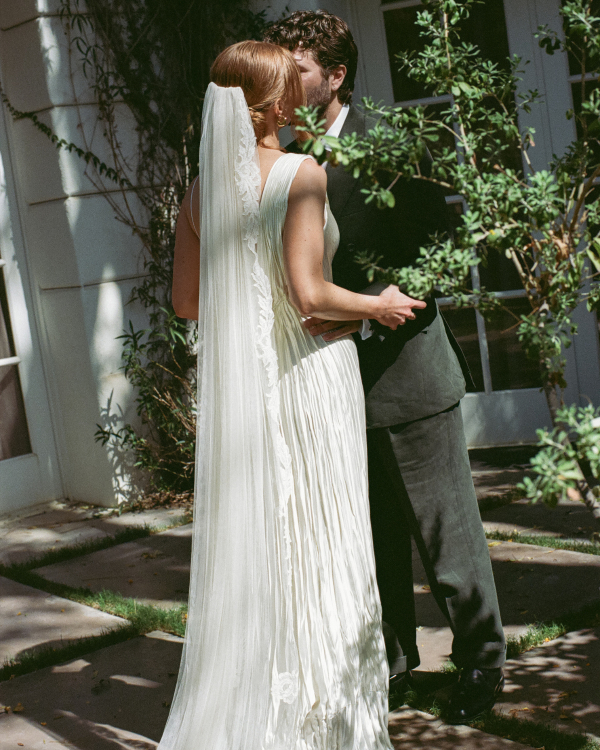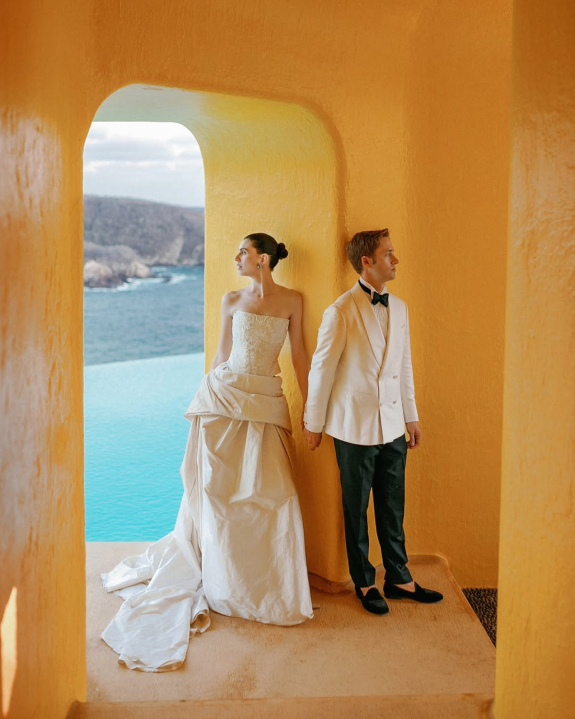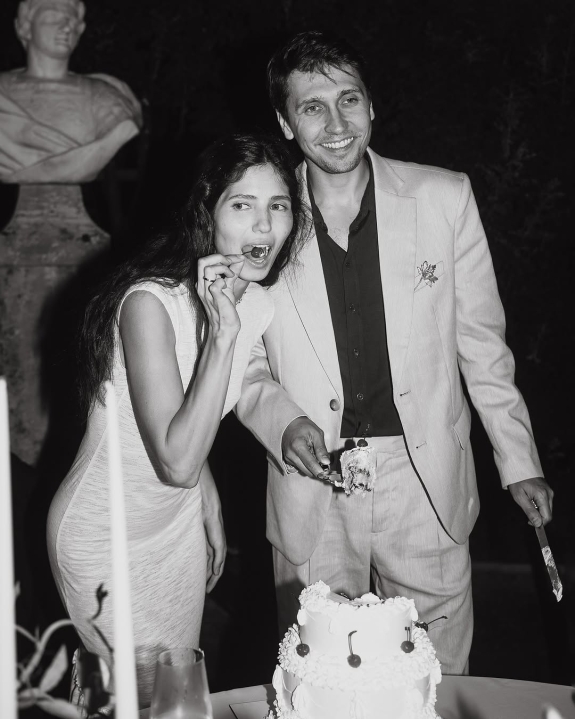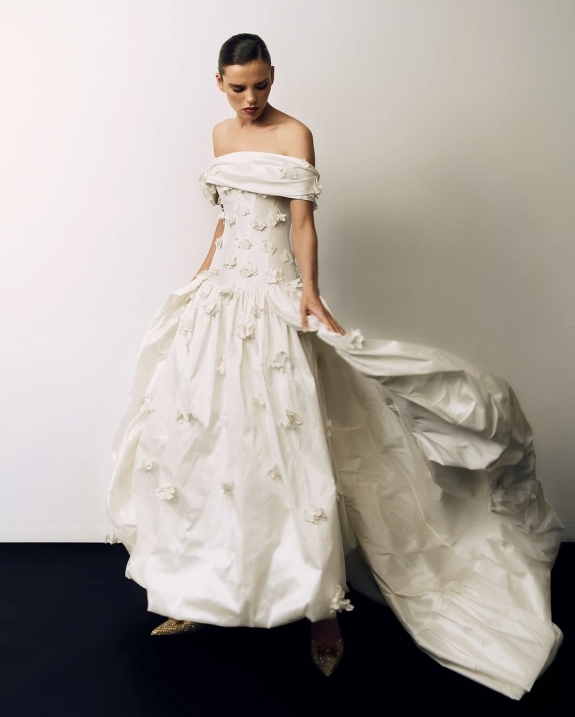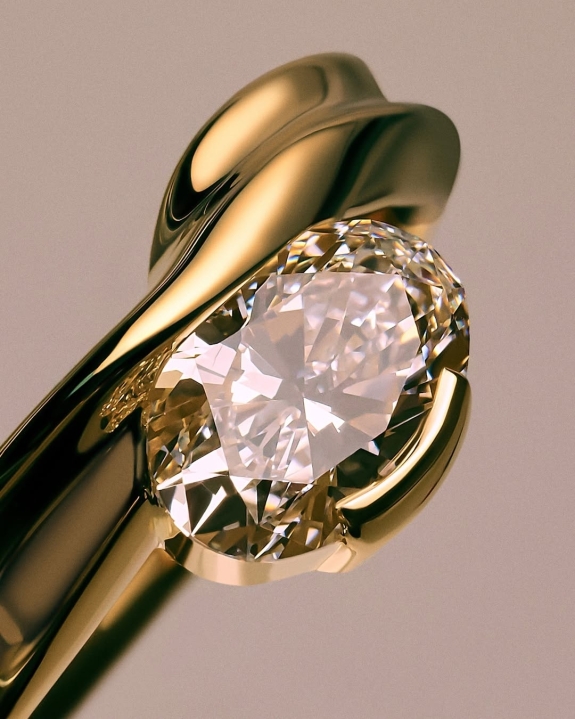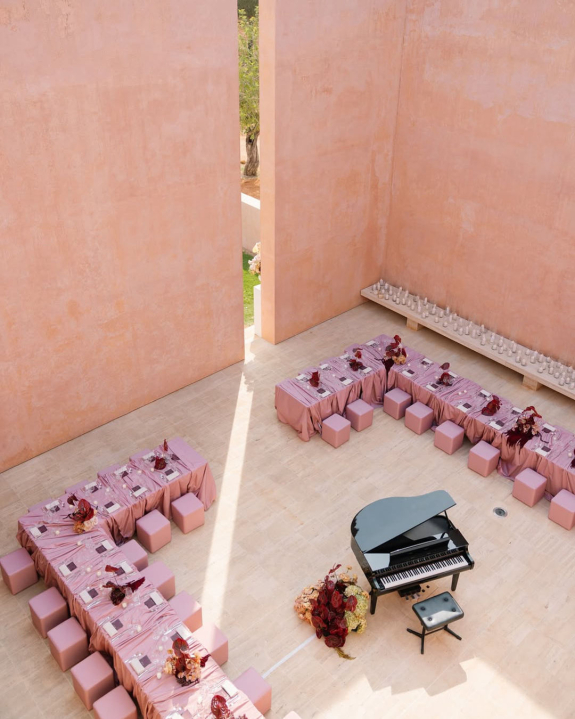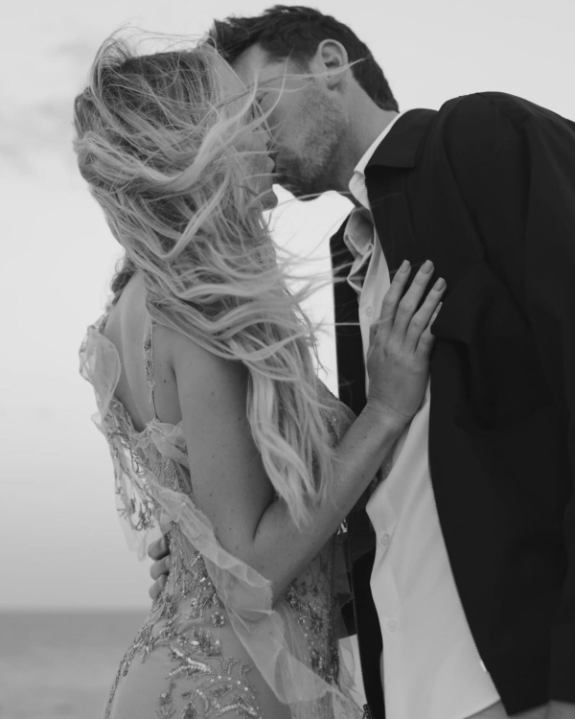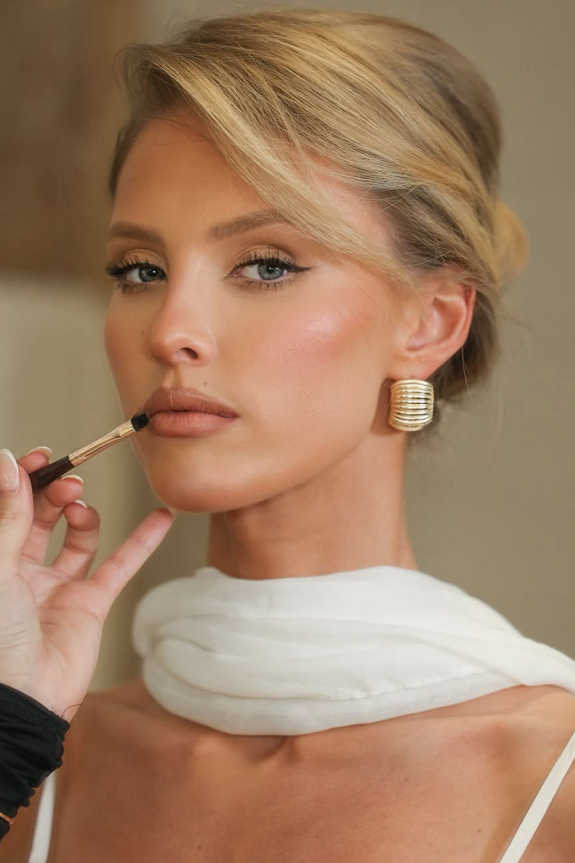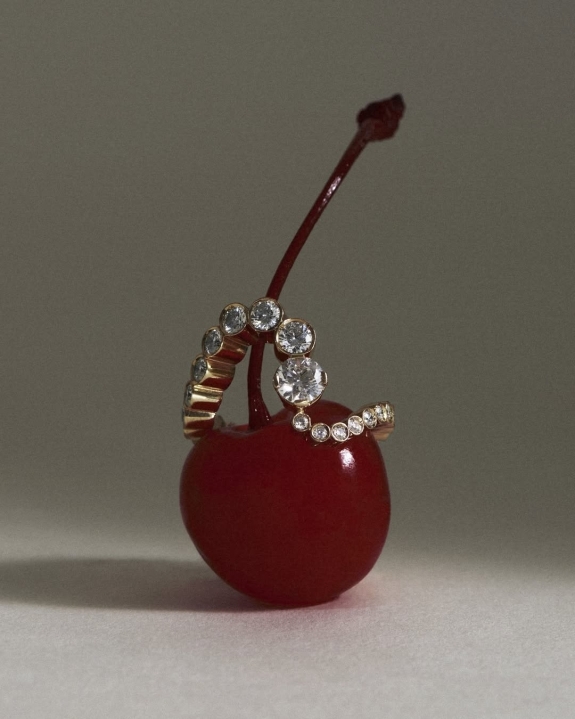Some stories begin long before a career even sparks. For photographer Kaela Leone, it started in her childhood home, watching her father bring images to life in a basement darkroom—an early lesson in the magic of memory and the art of holding time still. What began as a fascination with storytelling through film has since evolved into a signature style she describes as “documentary-led, editorial-inspired”—one that captures the truth of a moment with the trained eye of an artist. Blending film and digital, the Canada-based photographer approaches each wedding with curiosity and genuine care for each couple, intent on preserving the fleeting beauty of real moments. We sat down to take a look inside her creative process, philosophy, and the deep sense of connection that drives her work.
What inspired you to pursue wedding photography, and how did your journey begin?
I grew up in a home that revered the art of memory. My dad, a hobbyist photographer, would spend hours in our basement darkroom, coaxing images to life beneath the soft glow of a red light. I was mesmerized by how those fleeting moments could be stilled, transformed into something tangible.
As a child and teen, I was rarely without a camera in hand—first a digicam, then the camcorder my sister and I used to script our own worlds on weekends. But it wasn’t until 2019 that I felt the pull to step fully into photography as my life’s work. Analog film, with its richness and imperfection, called to me. It felt like a way of holding time, of honoring it.
At the beginning, I photographed everything! Portraits, products, pets, strangers. Yet it was weddings that kept tugging at me. They were unpredictable and alive. While the framework of a wedding day may seem familiar, each one is its own landscape shaped by light, weather, relationships, and the stories that gather in a single place. No two are ever the same.
What draws me most is the unknown—the moments that can’t be scripted, the quiet gestures, the unexpected bursts of joy. Weddings demand that I stay attuned, that I look closely. And in the end, it is always about connection and community, two threads that have defined my own life. To witness them in others, to weave them into images that will endure, that is why I do this work.
Your photography style is described as “documentary-led, editorial-inspired.” Can you elaborate on how you blend these two approaches in your work?
For me, documentary-led means approaching every wedding with openness and presence, allowing moments to unfold naturally rather than forcing them. I’m deeply observant, drawn to the quiet, in-between gestures that reveal the truest story of a day, and I aim to preserve them with sensitivity. The editorial influence comes through my eye for composition, light, and design. I’m inspired by texture, negative space, fashion details, and the way an environment can shape a frame. This gives the work a sense of refinement and timelessness without ever losing its emotional core.
Blending the two means you’ll receive a body of work that feels both real and elevated; unscripted moments documented with honesty, framed through an artful lens. What drew you to combine digital and film photography, and how do you feel each medium contributes to your storytelling?
I’m drawn to film for its depth, texture, and the way it carries nostalgia, holding onto a time that no longer exists. So much of what lights me up is that pull toward remembering, honoring the fleeting beauty of moments that will never return in quite the same way. Film allows me to offer that sense of memory to my clients, a bridge between past and present where time softens and becomes art. Digital balances this with clarity and agility, allowing me to move with ease through the unpredictable rhythm of a wedding day. Together they create harmony, weaving images that are both timeless and true, artifacts of memory held with tenderness.
How do you balance shooting local Canadian weddings versus traveling for destination weddings?
Balancing local Canadian weddings with destination work has been such a meaningful part of my journey. Shooting in the US has been especially lovely and expansive—it’s given me the chance to infuse new-to-me landscapes and environments into my storytelling, which feels both inspiring and creatively grounding. At the same time, I’ve always known I wanted to be intentional with the number of weddings I take on each year. There’s a vulnerability in setting those boundaries, because the fear of turning work away is real. But moving into 2026, I’m committing to only ten weddings. I’m looking forward to creating from a place of more balance, where life is interwoven with work, and I can pour into my couples from a cup that feels much more full!
You mention taking a photojournalism approach. How does this shape the way you capture moments on a wedding day?
Taking a photojournalism approach means I enter a wedding day as an observer. I’m not there to stage or script, but to anticipate and respond as moments naturally unfold. It’s something I’m always working on because I’m naturally quite extroverted and I love connecting with my couples. But I know my best work often comes from the unscripted—the quiet gestures, fleeting glances, and tender pauses that can only be seen when I step back. I remind myself to linger a little longer, to stay out of it, and to really see.
This is why I describe my work as documentary-led, editorial-inspired. While I lead with a photojournalistic approach throughout the day, I also bring an editorial eye to the way I compose and frame. And when it comes to portraits, that’s where I happily step in, offering guidance and direction so the final images feel elevated and timeless while still rooted in truth.
Can you walk us through your typical preparation process before a wedding day? How do you ensure you’re aligned with your clients' vision?
In the lead-up to a wedding, I connect closely with my couple and their planner to align on timeline, flow, and design vision. I also welcome inspiration photos; not to recreate them, but to understand what my couples are naturally drawn to, whether that’s light, framing, or mood. It's just as important to learn about the dynamics between them and their key guests (parents, siblings, grandparents, etc.), so I know which relationships and moments will be especially meaningful to preserve. These touchpoints help me anticipate their needs and ensure that when the day arrives, they feel at ease and fully seen. I also love getting a glimpse of their outfits beforehand, as the textures and shapes often spark inspiration and help me imagine how certain portraits might unfold.
Your portfolio showcases a blend of candid moments and composed shots. How do you decide when to step back and when to direct?
I let most moments unfold naturally, quietly observing the gestures and emotions that can’t be staged. Some of my favorite frames come later in the evening; watching people connect over dinner with a messy table and a few drinks in, or on the dance floor when inhibitions are gone and joy is worn on every sleeve. When it comes to portraits, I’ll step in with gentle guidance, using light, texture, and connection to create images that feel both natural and refined.
For couples seeking to work with you, what advice would you offer to ensure a harmonious collaboration and experience?
I resonate most with couples who value connection, who care as much about the atmosphere of their day as the details, and who are brave enough to welcome me as one of their own. Working with a planner is also essential, allowing me to devote myself fully to seeing and documenting (often without pause!) while trusting that every other detail is held with care. What matters most to me is that my couples feel supported, celebrated, and deeply seen, both in the moment and in the images that will last long after.
